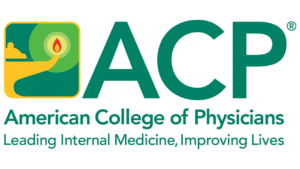
Given that September is Women in Medicine month, my thoughts turn to celebrating women across the spectrum of medicine, from pioneers like Elizabeth Blackwell, MD, the first woman to earn a medical degree in the U.S., to physicians today caring for patients day-in and day-out.
A story comes to mind from medical school of a female physician who made an impression on me.
On my surgery rotation in the mid-1980s as a third-year medical student, my attending was a female surgeon, the head of the department. Unbeknownst to me, this was exceedingly rare. I recall the group of us, students, residents, and a fellow, on rounds, following her into a large, sunny open ward containing multiple beds filled with patients. Suddenly a patient, seeing her, turned towards her and yelled out, “Nurse! Can you …?” I do not recall for sure if the patient asked for his urinal, help to get off his bedpan, or to have his water pitcher refilled. Regardless, in response, she marched wordlessly over to him and then sternly, loudly, and emphatically said, “I am your doctor, not your nurse …”
On that day in that moment, the team was stunned into silence. A nurse immediately and quietly appeared at the patient’s bedside. My attending stood alone with her words. And then we picked up where we left off and continued our rounds, as if nothing had happened.
Seared into my memory, this incident has remained with me. Without a doubt, this would not have occurred if my attending had been a male surgeon. Moreover, I had never seen a female physician so forcefully and directly confront bias. Upon reflection, it seems that possibly my attending spoke to the patient in the manner she did for multiple reasons: to send a message to the patient, to send a message to all the patients in the open ward (for certainly, they heard her), to send a message to the nurses (they heard her), and to send a message to all of us, young trainees, who were learning the ways of the wards. This scenario also conveyed the impression that this was not the first time my attending had experienced this. Perhaps this was not the first time this patient had referred to her as “nurse”? Or perhaps she frequently encountered this, in general? Maybe. And I also wondered about her relationship with “her nurses” at that time. Indeed, they were “her nurses.” Did she get along with them, did they respect her? And, of course, how did the patient feel? Embarrassed? Or was he oblivious?
What about the realities female physicians face today? Perhaps one of the most important and intractable issues is the gender pay gap. Estimates suggest that women physicians make approximately $2M less than male physicians over a forty-year career. The gap persists despite women being more likely to enter lower-paying specialties, such as pediatrics.
What about childcare? Many attribute at least part of the gender pay gap to women reducing their work hours more than men, especially early in their careers, to have a family. Medicine could borrow from the playbook of Susan Wojcicki, former YouTube CEO who recently passed away, who recognized paid maternity leave as good for business and a valuable retention tool. The rate of new moms leaving Google (which owns YouTube) fell by 50 percent after paid maternity leave was increased from 12 weeks to 18 weeks.
Rectifying the gender pay gap requires ongoing vigilance, transparency, and policy and work culture change. Recognizing and eliminating covert and overt biases is necessary.
Addressing the gender pay gap requires conviction. We must not let other people’s opinions of our worth, as represented by salary or responsibilities, define our worth. Such surrogate endpoints muddy our thinking, for our inherent worth is priceless. When we have conviction, anything is possible. When doors are closed, we find windows to move through. When we know who we are, we succeed. We are determined, and it does not matter how people think about us or what they think about us.
It takes time for biases to be recognized and eliminated and for culture to change. Change occurs one relationship, one interaction at a time, whether with patients, colleagues, or the CEO. It is up to each of us to be ready to effect change when the opportunity presents itself.
What resources are available for women medical students, residents, and physicians? There are many. This 2018 piece in the Annals Fresh Look blog contains valuable advice to advance the careers of women in medicine. ACP strongly promotes gender equity with the longstanding goal of recognizing the full potential of women in the internal medicine workforce. The Women in Medicine Summit taking place in Chicago this month is a rich opportunity supporting women physician empowerment.
So, today, do patients mistake female physicians for nurses? Yes, this still happens. The difference today is we do not have to respond the way my attending did 40 years ago. We know who we are. We are not coming of age; we have come of age. A female physician CEO leads the ACP. A woman is running for President of the United States. We do not have to ask to be at the table; we are at the table. And we keep our foot on the gas. We continue to press ahead, together with allies, to ensure physicians like my surgery attending never have to stand alone again.
Janet A. Jokela, MD, MPH, ACP’s Treasurer 2022-2025, served as the Regional Dean of the University of Illinois College of Medicine-Urbana, and currently serves as Professor and Senior Associate Dean of Engagement at the Carle Illinois College of Medicine, Urbana, IL.
The American College of Physicians is the largest medical specialty organization in the United States, boasting members in over 145 countries worldwide. ACP’s membership encompasses 161,000 internal medicine physicians, related subspecialists, and medical students. Internal medicine physicians are specialists who utilize scientific knowledge and clinical expertise for diagnosing, treating, and providing compassionate care to adults, spanning from those in good health to individuals with complex illnesses. Stay connected with ACP on X @ACPIMPhysicians, Facebook, LinkedIn, and Instagram @acpimphysicians.

